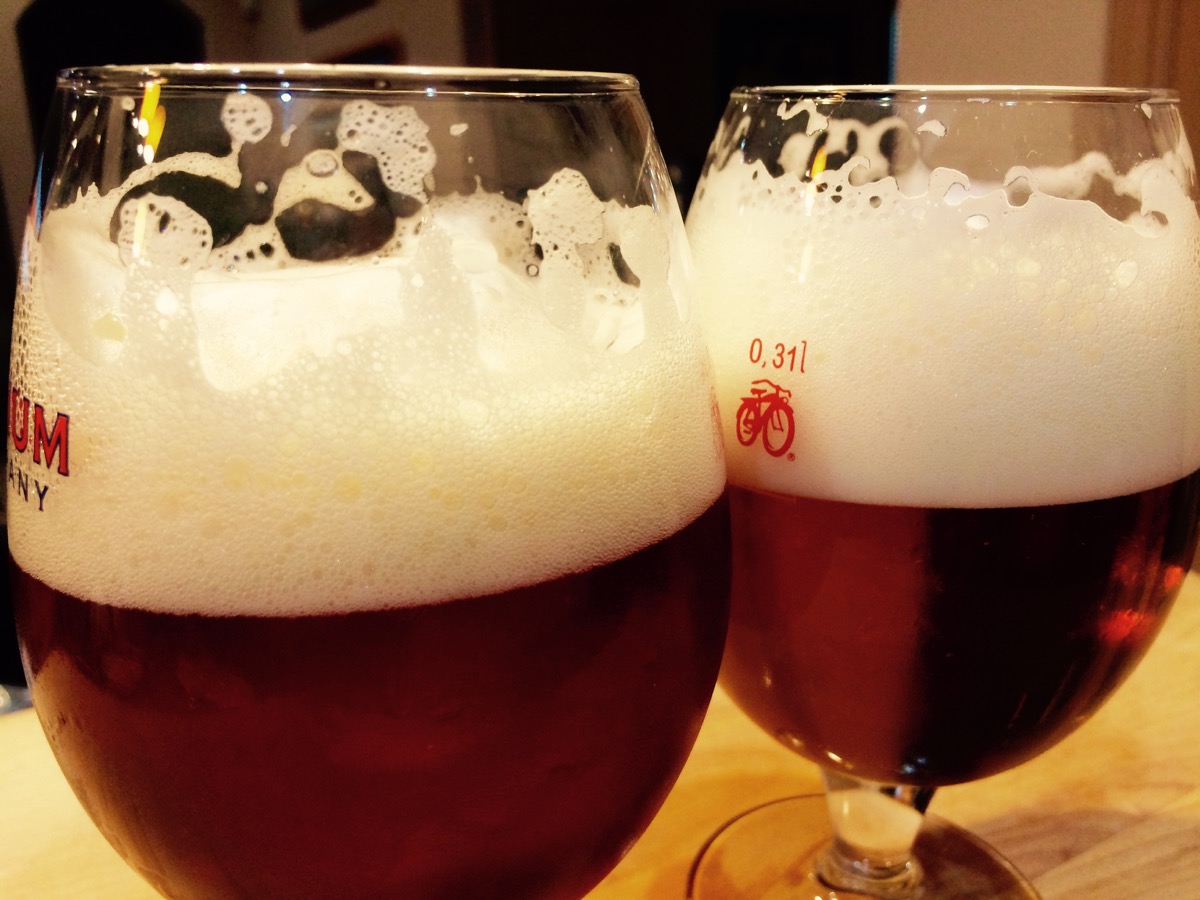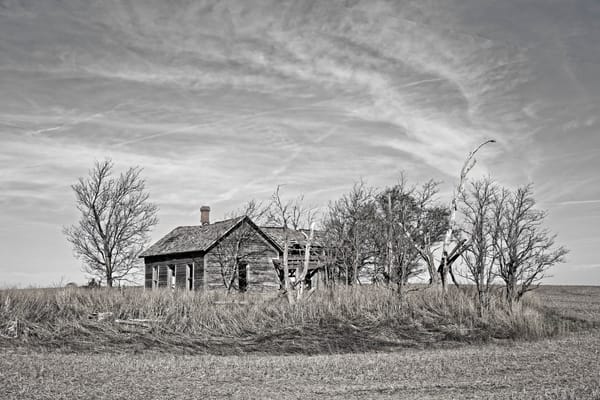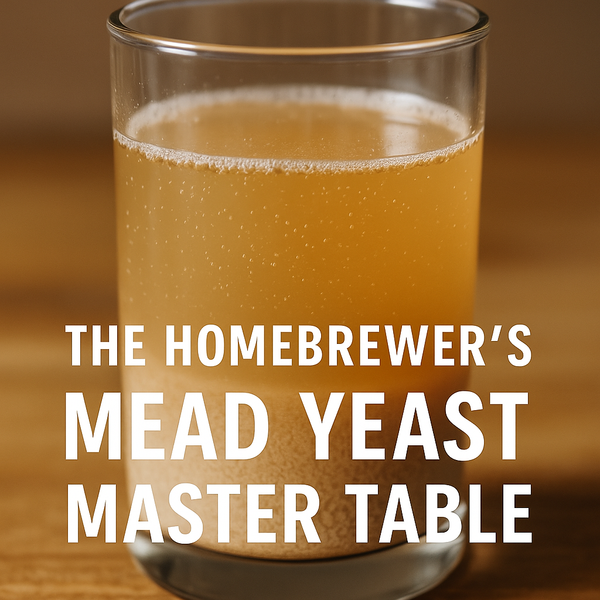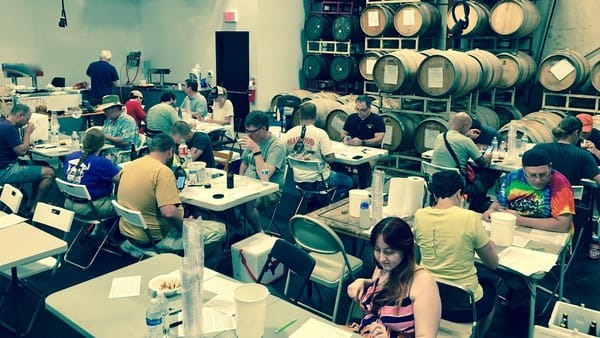Farmhouse Ales, Revisited; Part 1

Much of my childhood was spent around agriculture, and Northern Kansas has a wonderful history. From pioneers (Little House on the Prairie) to brave farmers that worked the soil through the Depression, the Dust Bowl and two world wars, my mother's German family has very deep roots in rich top soil. I recently spent some time in Smith Center, Kansas, very near where I graduated high school. I can see the changes over the last 30 years, but also traveling with my Grandmother and Mom, I got a sense of the hearty and innovative folks that homesteaded there. Cedar, Kansas, is very dear to me - just a few miles between Phillipsburg and Gaylord was the home of my great-grandfather, whose parents moved to the area from Kentucky in the late 1800's. Cedar was once a thriving community, but now is basically ruins of small old homes, tilting out-houses, and fields of milo and soybeans surrounding a small town center. My great aunt owned and ran a little grocery and the post office and my uncle was the resident mechanic. My Grandfather's place was across the highway where he farmed and worked as a blacksmith. I had the privilege of restoring a 1947 Chevy Stylemaster, the same year and model that he purchased, wrecked, and built his tractor from the parts. He taught me how to work the engine, old farmers tricks like using pig skins as gaskets. He passed away in 1987, and my Grandmother, great-aunts and great-uncles (and a few cousins) are now in their 80's and 90's. Hearty stock, resilient and most of all, down-home and loving people formed by very hard work and weather, scraping their living out of the soil.
I wanted to do a series of "Farmhouse" ales that sort of captured this essence - the sense of history, farmhouse sensibility, and a nod to the land. The second part of this series will focus on some of the stories one can imagine exploring the Northern Kansas border, where pioneers settled with indians roaming the land, hard labor, but also some of the decay and ruin that is causing us to lose some of the wonderful history of this area. Kansas remains an important farming state, confirmed by walking through seven foot tall fields of tasseling corn, or knee high rows of sorghum and milo. When the soybeans are flowering and the wind blows, the flowers blend with the plentiful spruce and cedar trees that are traditionally used as wind and snow breaks. Truly beautiful and a stark contrast with winters filled with blowing snows and ice.
To start out, I am exploring three possible saison yeasts. Saison, because of the link to the Farmhouse styles of France, Wallonia and Belgium, brings in the wonderfully dry, tart, and spicy yeast character I love. Generally, when using noble hops, you get an earthy and floral spice note that resonates. Practically, we need to admit modern saisons are probably far from the various farmhouse ales that grew out of the agricultural communities of Europe. The modern agricultural ethos, however, remains rooted in the values transplanted when farmers moved from Europe; namely frugality, ingenuity, persistence, and a love for the crops they are growing.
The yeasts that I am comparing against my house favorite (Lallemond Belle Saison) are from The Yeast Bay; Wallonian Farmhouse and Saison Blend. I am looking for something with a very unique spicy character, excellent attenuation while leaving an amazing mouthfeel. To compare, I am using essentially identical recipes, my Rye Saison that has become my favorite house saison recipe.
[beerxml recipe=https://accidentalis.com/content/files/2025/11/rye-enebrium-2.xml metric=false cache=-1]
I recently bought a Grainfather brewing system, and these will also serve as brews to help me get a handle on the system. Because I will have about 20 gallons of saison, I am also adding 2 ounces of Carafa III black malt to the second brew, to add more color and maybe a slight toast note. This was added during the sparge to minimize flavor. In the end, the color didn't really come through - nor did any flavor, so clearly more black malt would be required.
Let's walk through the malt bill a bit. I used my favorite two-row malt, Pale Moon 2-Row from Blacklands Malt. This barley comes from East Colorado, which borders Kansas, about 100 miles from Smith Center. Turns out that very little barley is grown in Kansas. Wheat is king. In the future brews, I will be using raw hard red wheat if I can find it. Otherwise, will use flaked wheat with a little added bran. The small moderate crystal is there for color and flavor nuance, so that will probably swap out in later brews to meet the needs of the recipe. I am using rye in the yeast trial recipes as (a) I already have a lot of rye and (b) it compliments spicy yeast character. The sugar (will use local honey from Smith Center, Kansas) is there to dry out the beer just a bit. I may reserve the right to use some local fruit or common spices.
Fermentation was conducted at 72F, assuming that these yeast (per instructions) like elevated temperatures. As you can tell below, I should have pushed the fermentation temperatures much higher. I am looking at fermentation character, and attenuation - hoping that shifting from my normal pitch low (66F) and let free rise technique will benefit these yeasts. The fermenters are 6.5 gallon Speidels, and I am 'open fermenting' these saisons (foil, loose, no airlock). I harvested the yeast to repitch into the later brews.
The Yeast Bay trial batches have fully fermented out, but the FG is quite different between the yeasts. I am accustomed to low FGs with Belle Saison - usually finishing very near 1.000. Both of the trials finished higher, but one is still quite dry.

Some quick tasting notes, with a comparison to a very similar recipe using Belle Saison: Some quick tasting notes, with a comparison to a very similar recipe using Belle Saison:
- Lallemond Belle Saison: Spicy, black pepper with mild notes of banana and clove. Cinnamon. Big bouquet with apparent fruit. This is a big saison at 8% and dry as a bone. Deep golden color with high clarity. Rocky dense head that falls very slowly with sticky lacing. This is really my favorite saison yeast, second maybe to 3711. Note, I was lazy - this was three packages of dry yeast sprinkled onto 12 gallons. "Open" fermentation - no airlock, just loosely applied foil. Completely dry at 1.000.
- The Yeast Bay Saison Blend: Fruity with strong flavors of banana and mango. Good mouthfeel and solid head retention, but really lacking the spice that I love in a saison. I suspect this would perform better fermented much hotter, bring up the phenol/ester levels. While not a boring beer, it just doesn't come deliver as a saison. Good clarity, deep golden color, rocky white head. Finished very dry at 1.003.
- The Yeast Bay Wallonian Farmhouse: The most disappointing flavor profile. I would describe it as a single note phenolic over a strong banana ester. I get more of the Hallertau/Saaz hops coming through than the other saisons. Again, great clarity, dense rocky head stand, but maybe a dumper. It just doesn't stand up. I also suspect this is a yeast that benefits from the really hot fermentation temperatures. This also finished very high... 1.014.
So while you might read the Yeast Bay trials as a bust, I am pleased with the recipes. In all of these the rye is present and a nice counterpoint to the esters that can show. I have harvested the yeast and will use them again but in a hotter fermentation environment to see how they might change. Do note that this issue with the flavors is likely due to a cooler than recommended fermentation schedule, and maybe impacted by recipe design.

I conducted a step mash (hochkurz) on the initial Belle Saison batch (didn't have the Special B in the grist) and loved the resulting mouthfeel and headstand after force carbonation - so used the same on the other two batches. The mash schedule was a 60 minute rest at 146F, with a rise and rest at 158F/160F for 20 minutes and a mash out. While it extends the mash, the result is a very dry beer with good mouthfeel.




